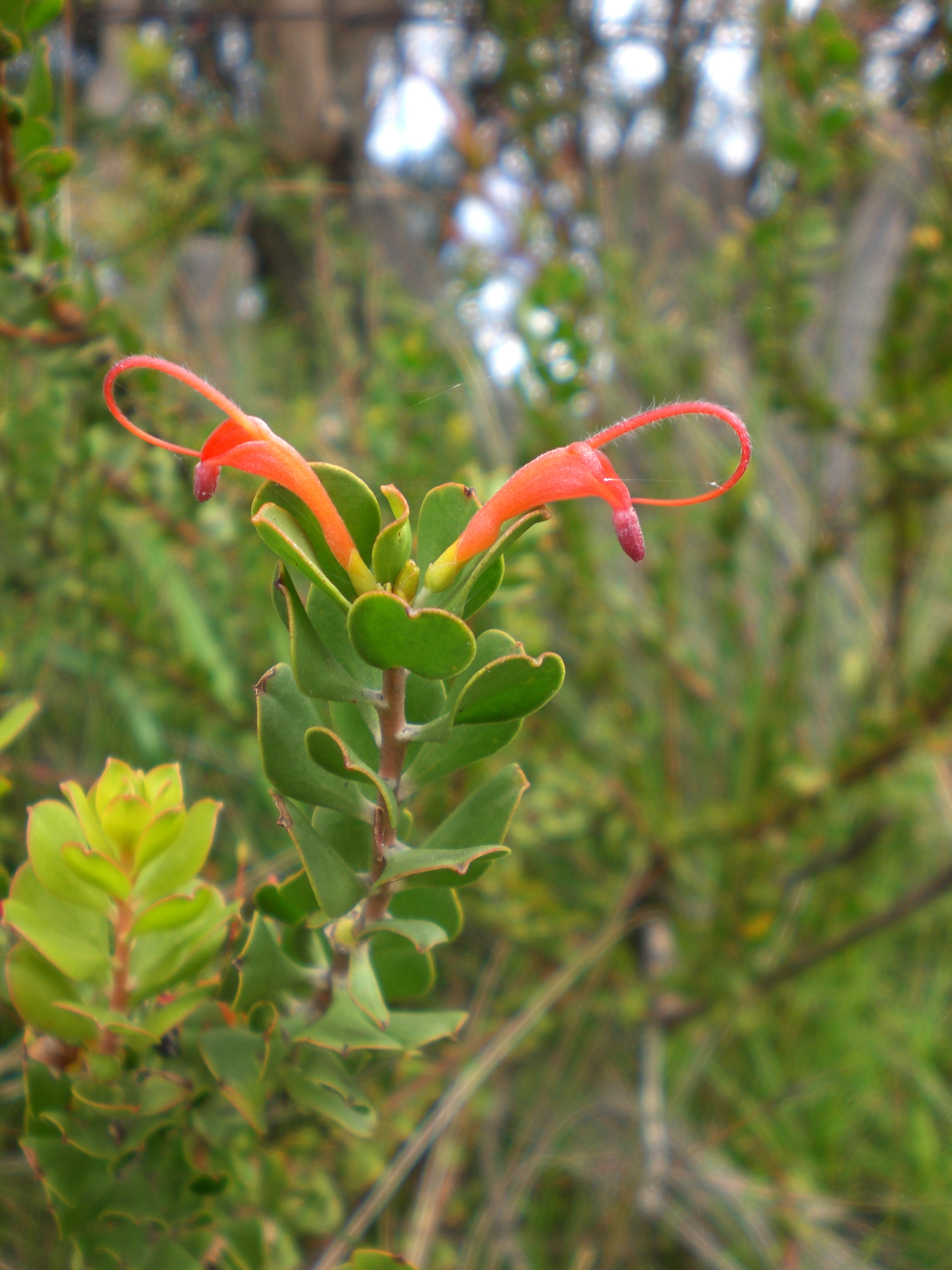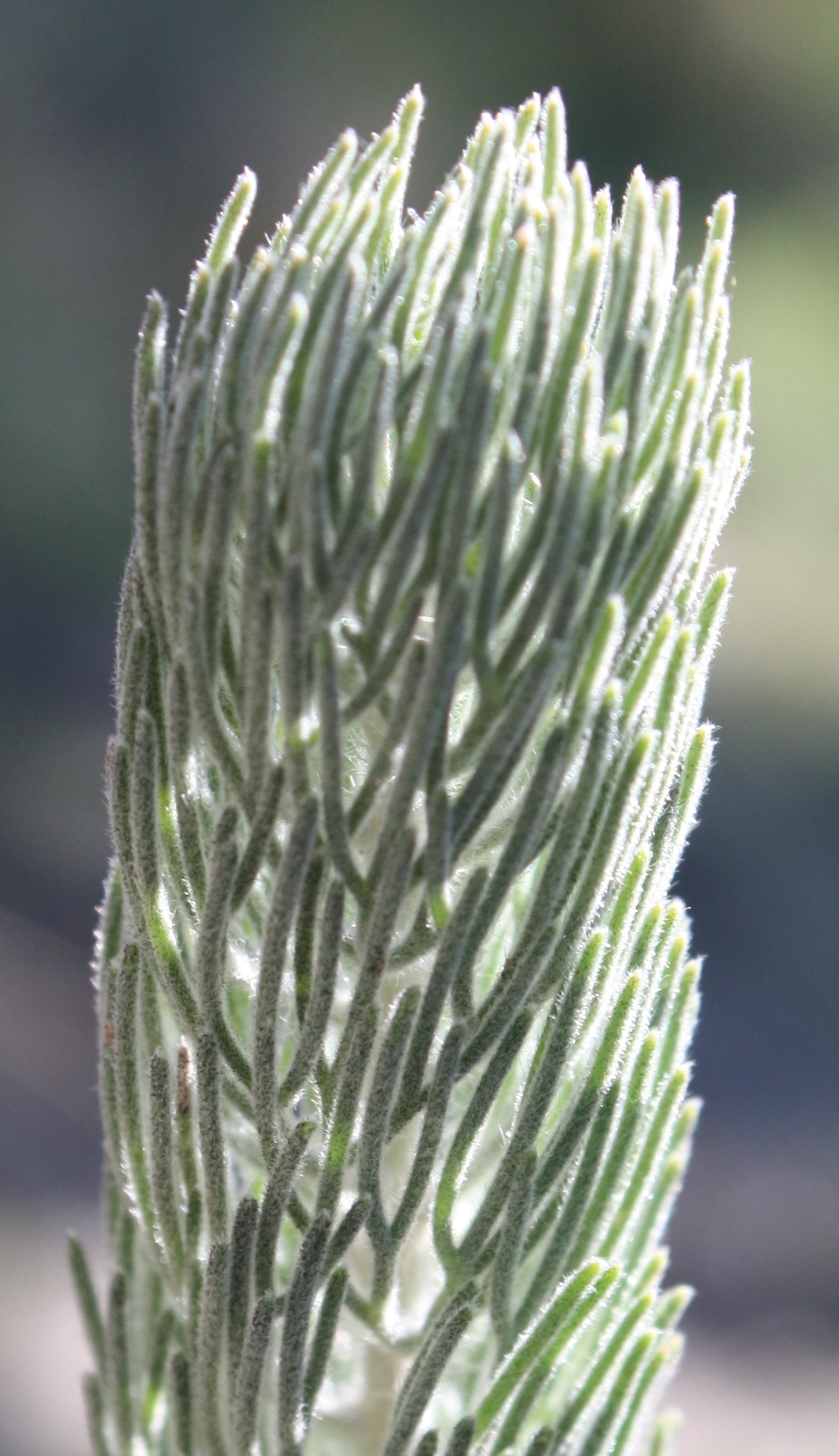Adenanthos Subsect. Anaclastos on:
[Wikipedia]
[Google]
[Amazon]


 :''
:''

Ernest Charles Nelson
(Ernest) Charles Nelson (15 September 1951, Belfast, Northern Ireland) is a botanist who specialises in the heather family, Ericaceae, especially ''Erica'', and whose past research interests included the Proteaceae especially '' Adenanthos''. H ...
's taxonomic arrangement of ''Adenanthos
''Adenanthos'' is a genus of Australian native shrubs in the flowering plant family Proteaceae. Variable in habit and leaf shape, it is the only genus in the family where solitary flowers are the norm. It was discovered in 1791, and formally publ ...
'' was the first modern-day arrangement of that plant genus. First published in his 1978 ''Brunonia
''Brunonia australis'', commonly known as the blue pincushion or native cornflower, is a perennial or annual herb that grows widely across Australia. It is found in woodlands, open forest and sand plains. In Cronquist's classification scheme ...
'' article "A taxonomic revision of the genus ''Adenanthos'' (Proteaceae)", it superseded the arrangement of George Bentham, which had stood for over a hundred years. It was updated by Nelson in his 1995 treatment for the '' Flora of Australia'' series of monographs.
Background
''Adenanthos'' is a genus of around 30 species in the plant familyProteaceae
The Proteaceae form a family of flowering plants predominantly distributed in the Southern Hemisphere. The family comprises 83 genera with about 1,660 known species. Together with the Platanaceae and Nelumbonaceae, they make up the order Pro ...
. Endemic to southern Australia
Australia, officially the Commonwealth of Australia, is a Sovereign state, sovereign country comprising the mainland of the Australia (continent), Australian continent, the island of Tasmania, and numerous List of islands of Australia, sma ...
, they are evergreen woody shrubs with solitary flowers that are pollinated by birds
Birds are a group of warm-blooded vertebrates constituting the class Aves (), characterised by feathers, toothless beaked jaws, the laying of hard-shelled eggs, a high metabolic rate, a four-chambered heart, and a strong yet lightweigh ...
and, if fertilised
Fertilisation or fertilization (see spelling differences), also known as generative fertilisation, syngamy and impregnation, is the fusion of gametes to give rise to a new individual organism or offspring and initiate its development. Proce ...
, develop into achene
An achene (; ), also sometimes called akene and occasionally achenium or achenocarp, is a type of simple dry fruit produced by many species of flowering plants. Achenes are monocarpellate (formed from one carpel) and indehiscent (they do not ope ...
s. They are not much cultivated. Common names of species often include one of the terms ''woollybush'', ''jugflower'' and ''stick-in-the-jug''.
The first known botanical collection of ''Adenanthos'' was made by Archibald Menzies during the September 1791 visit of the Vancouver Expedition to King George Sound on the south coast of Western Australia. However this did not lead to publication of the genus. Jacques Labillardière collected specimens of '' A. cuneatus'' from Esperance Bay the following year, and in 1803 Jean Baptiste Leschenault de la Tour collected the same two species as Menzies had 12 years earlier. Labillardière published the genus in 1805, in his '' Novae Hollandiae Plantarum Specimen'', based on the specimens collected by himself and Leschenault. The genus was given the name ''Adenanthos'' from the Greek αδην (''aden-'', "gland") and ανθοσz (''-anthos'', "flower"), in reference to the prominent nectaries.
By 1870, 13 species had been published. That year, Bentham published a fourteenth species and the first infrageneric arrangement, dividing the genus into two taxonomic section
In botany, a section ( la, sectio) is a taxonomic rank below the genus, but above the species. The subgenus, if present, is higher than the section, and the rank of series, if present, is below the section. Sections may in turn be divided into su ...
s, ''A.'' sect. ''Eurylaema'' and ''A.'' sect. ''Stenolaema'', based on the shape of the perianth tube: members of ''A.'' sect. ''Eurylaema'' have perianth tubes that are curved and swollen above the middle, whereas members of ''A.'' sect. ''Stenolaena'' have perianth tubes that are straight and unswollen. This arrangement stood for over a hundred years, by which time a number of new species had been discovered, rendering Bentham's treatment "very inadequate and incomplete".
Nelson's arrangement
Nelson's arrangement of ''Adenanthos'' was first published in his article "A taxonomic revision of the genus ''Adenanthos'' (Proteaceae)", published in ''Brunonia
''Brunonia australis'', commonly known as the blue pincushion or native cornflower, is a perennial or annual herb that grows widely across Australia. It is found in woodlands, open forest and sand plains. In Cronquist's classification scheme ...
'' in 1978. Eight new species and 4 new subspecies were published, bringing the number of species up to 32. In naming them, Nelson follows Labillardière in treating ''Adenanthos'' as having feminine gender, despite an ICBN recommendation (not rule) that names ending in ''-anthos'' be treated as masculine. Bentham's two sections are retained, but several additional diagnostic characteristics are given for them; and, in accordance with modern rules of botanical nomenclature
Botanical nomenclature is the formal, scientific naming of plants. It is related to, but distinct from Alpha taxonomy, taxonomy. Plant taxonomy is concerned with grouping and classifying plants; botanical nomenclature then provides names for the ...
, ''A.'' sect. ''Stenolaema'' is renamed to the autonym ''A.'' sect. ''Adenanthos''. This Nelson further divides into two subsections, ''A.'' subsect. ''Anaclastos'' and ''A.'' subsect. ''Adenanthos''. Detailed descriptions of each are given, but Nelson recommends perianth length as the most convenient key for distinguishing between them.
Nelson's subsections were discarded by him in his 1995 treatment of ''Adenanthos'' for the '' Flora of Australia'' series of monographs. He retained the two sections, and listed 40 species. Masculine names were used in accordance with a 1994 ICBN ruling. The full arrangement is as follows:

 :''
:''Adenanthos
''Adenanthos'' is a genus of Australian native shrubs in the flowering plant family Proteaceae. Variable in habit and leaf shape, it is the only genus in the family where solitary flowers are the norm. It was discovered in 1791, and formally publ ...
''
:: ''A.'' sect. ''Eurylaema''
:::'' A. detmoldii''
:::'' A. barbiger''
:::'' A. obovatus''
:::'' A. × pamela''
:: ''A.'' sect. ''Adenanthos''
:::'' A. drummondii''
:::'' A. dobagii''
:::'' A. apiculatus''
:::'' A. linearis''
:::'' A. pungens''
:::: ''A. pungens'' subsp. ''pungens''
:::: ''A. pungens'' subsp. ''effusus''
:::'' A. gracilipes''
:::'' A. venosus''
:::'' A. dobsonii''
:::'' A. glabrescens''
:::: ''A. glabrescens'' subsp. ''glabrescens''
:::: ''A. glabrescens'' subsp. ''exasperatus''
:::'' A. ellipticus''
:::'' A. cuneatus''
:::'' A. stictus''
:::'' A. ileticos''
:::'' A. forrestii''
:::'' A. eyrei''
:::'' A. cacomorphus''
:::'' A. flavidiflorus''
:::'' A. argyreus''
:::'' A. macropodianus''
:::'' A. terminalis''
:::'' A. sericeus''
:::: ''A. sericeus'' subsp. ''sericeus''
:::: ''A. sericeus'' subsp. ''sphalma''
:::'' A. × cunninghamii''
:::'' A. oreophilus''
:::'' A. cygnorum''
:::: ''A. cygnorum'' subsp. ''cygnorum''
:::: ''A. cygnorum'' subsp. ''chamaephyton''
:::'' A. meisneri''
:::'' A. velutinus''
:::'' A. filifolius''
:::'' A. labillardierei''
:::'' A. acanthophyllus''
See also
* Bentham's taxonomic arrangement of ''Adenanthos''References
External links
* {{Flora of Australia Online , name = Adenanthos , id = 45040 *:— an online version of Nelson's 1995 arrangement. 1978 introductions Adenanthos Plant taxonomies